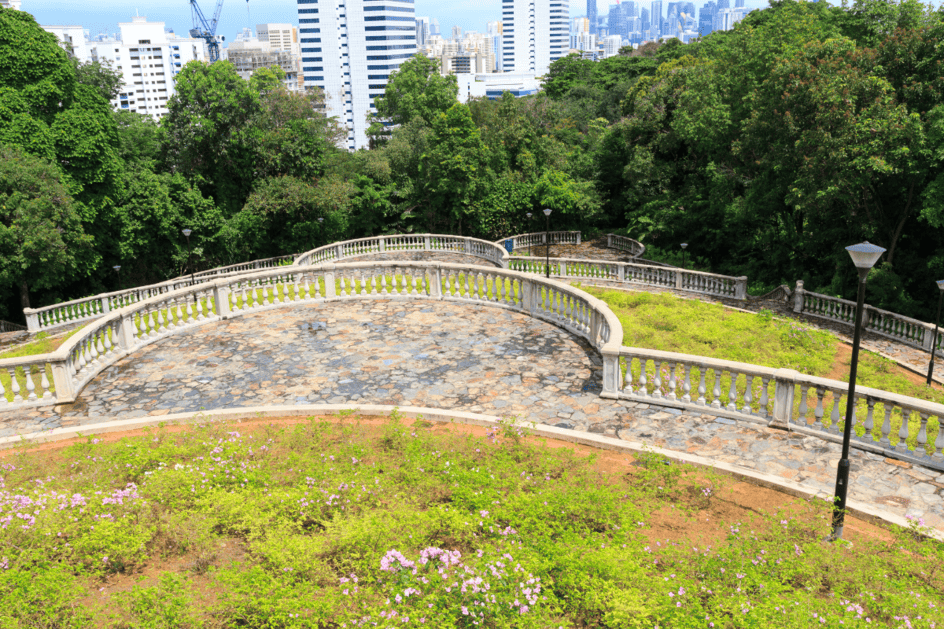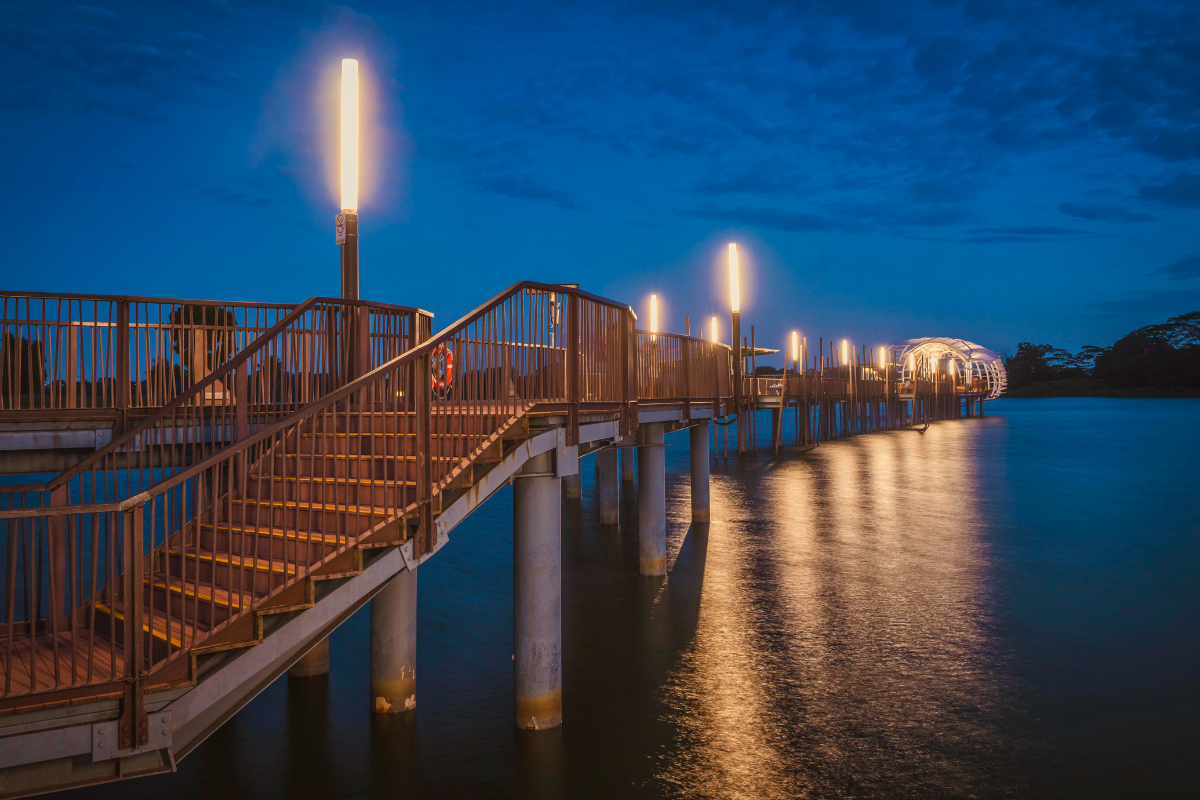In the heart of Singapore’s dense urban tapestry lies a softer, quieter side — one woven with greenery, serenity, and hidden wonders. While the likes of Gardens by the Bay and the Singapore Botanic Gardens capture international attention, the Lion City is also home to lesser-known green spaces that offer refuge from the fast-paced city life. These hidden gardens and parks are more than just scenic backdrops; they embody Singapore’s commitment to biodiversity, sustainability, and mindful living.
Whether tucked behind bustling neighbourhoods or nestled atop buildings, these verdant enclaves provide a glimpse into a Singapore often overlooked by tourists and even locals. This article explores the island’s secret gardens and lesser-known parks, highlighting their history, features, and the quiet magic they hold.
1. Pearl’s Hill City Park – A Forgotten Oasis in Chinatown
Just minutes from the bustle of Chinatown lies Pearl’s Hill City Park, a secluded haven perched atop a hill. This former reservoir site is easily missed despite its proximity to Outram Park MRT station.
Steeped in colonial history, the park was once home to a reservoir that supplied water to the surrounding areas. Today, it remains one of the quietest green spaces in the city. Mature Tembusu trees and dense foliage form a cooling canopy, while park benches dot the sloping landscape, inviting solitary reflection or relaxed conversation.
The park’s relative obscurity makes it ideal for birdwatchers, nature photographers, and anyone seeking a contemplative stroll. Its hilly terrain also offers a light workout for casual hikers and joggers.
2. Telok Blangah Hill Park – Overlooked but Outstanding
While part of the Southern Ridges trail, Telok Blangah Hill Park is often overshadowed by its more famous counterparts like Mount Faber or Henderson Waves. Yet this park, rich in heritage and nature, is worth exploring in its own right.
Originally the site of colonial bungalows and pepper plantations, the park features the Terrace Garden, a European-style garden crowned with panoramic views of the city and port. The garden is a favourite among wedding photographers but remains largely under-visited during the week.
Connecting to HortPark and Mount Faber, Telok Blangah Hill is ideal for an extended urban trek. Keep an eye out for butterflies, tropical birds, and the occasional long-tailed macaque along the forest paths.
3. Tampines Eco Green – Where Urban Meets Untamed
In the East, a different kind of park thrives — one that feels wilder, more untouched. Tampines Eco Green is a nature park designed with sustainability at its core. Unlike manicured city parks, this eco-sanctuary embraces natural landscaping and encourages biodiversity.
Spanning 36 hectares, it includes freshwater wetlands, open grasslands, and secondary forests. The park is intentionally kept rustic — there are no lights or concrete pavements. Visitors are encouraged to stick to eco-trails and listen to nature’s soundtrack of birdsong, rustling leaves, and frog calls.
This park is particularly appealing to birdwatchers and nature photographers, with over 75 species of birds recorded, including the Baya Weaver and the White-breasted Waterhen.
4. Yishun Pond Park – A Green Gem Next to a Hospital
Adjacent to Khoo Teck Puat Hospital lies Yishun Pond Park, an often-overlooked park that exemplifies how healthcare and green design can coexist harmoniously. What began as a simple retention pond is now a multi-functional space combining water treatment, landscaping, and public recreation.
The star attraction is a spiral tower offering panoramic views of the pond, complete with lotus plants, dragonflies, and nesting birds. The park connects seamlessly to the hospital’s rooftop gardens, creating a green corridor that promotes wellness not just for patients, but the wider community.
It’s not uncommon to find medical staff and patients taking slow strolls here, contributing to its calm and therapeutic atmosphere.
5. Kranji Marshes – A Wetland Wonderland
For those willing to venture to the north-western edge of the island, Kranji Marshes offers one of the most biodiverse wetland experiences in Singapore. It is also one of the few places where you can experience wide, open sky views — a rarity in the city.
Covering over 56 hectares, the marshland is home to over 170 species of birds, 54 types of butterflies, and 33 species of dragonflies. The reserve is split into a public area and a restricted core conservation area, which can be explored through guided tours.
Ideal for avid birdwatchers and nature enthusiasts, Kranji Marshes also provides educational signboards and viewing towers for an immersive, family-friendly day out.
6. Jurong Eco-Garden – Industrial Park Meets Nature
Tucked within the CleanTech Park in western Singapore lies the Jurong Eco-Garden, a testament to how industrial development can embrace ecological principles. Often missed due to its location, the eco-garden was designed as a green lung for the surrounding business estate.
The park integrates various ecosystems, including a freshwater swamp forest, stream habitats, and flowering gardens. A favourite among butterfly enthusiasts, the park also includes a dedicated Butterfly Garden.
Jurong Eco-Garden is a perfect example of Singapore’s vision to balance urbanisation with ecological stewardship. Its secluded trails and occasional art installations provide moments of peaceful retreat in an otherwise industrial area.
7. Raffles Place Green Roof – Hidden in Plain Sight
Sometimes, green spaces aren’t hidden far away—they’re right above our heads. The green roof at One Raffles Place is one such example. Located atop the commercial tower, this rooftop garden is open to the public and offers a unique juxtaposition of skyscrapers and greenery.
While not a traditional park, it serves as a mid-day escape for office workers and a scenic spot for a quiet lunch. With shaded seating areas, well-tended flora, and occasional art displays, this hidden-in-plain-sight green spot exemplifies how vertical gardens can humanise dense urban zones.
8. Bukit Brown – Nature, Heritage, and Solitude
Bukit Brown Cemetery may not be a conventional park, but for those seeking tranquillity and historical depth, this is an extraordinary green space. Once a burial ground for the Chinese elite, it is now overrun by nature, transforming into a semi-wild forest park teeming with biodiversity.
Walking through Bukit Brown is akin to stepping back in time. Many tombs bear intricate carvings and epitaphs, revealing forgotten stories of Singapore’s early settlers. Simultaneously, the forested trails attract joggers, birdwatchers, and even botanists cataloguing the flora.
Despite periodic development threats, conservation groups and nature lovers continue to protect this sacred ground. Bukit Brown remains a testament to the entwined narratives of history and nature.
9. Punggol Waterway Park – The Lesser-Known Corners
While Punggol Waterway Park is gaining popularity, many still don’t realise the diversity hidden within its various zones. The quieter stretches near the Lorong Halus Wetland, for instance, are less frequented and offer a more meditative experience compared to the main promenade.
This park integrates leisure and ecology beautifully — with lily-covered water features, scenic bridges, and even otter sightings for the patient observer. The area’s design reflects Singapore’s broader environmental vision: turning former wastelands and reservoirs into community green lungs.
10. The Learning Forest – A Secret Within the Botanic Gardens
Even Singapore’s most famous park holds secrets of its own. The Learning Forest, a relatively recent addition to the UNESCO-listed Singapore Botanic Gardens, is designed to mimic the structure of a lowland rainforest.
Despite being part of a major tourist attraction, the Learning Forest remains tranquil and immersive. Elevated boardwalks wind through wetlands and ancient tree groves, providing an educational journey through native flora and fauna. The SPH Walk of Giants, in particular, features towering tropical trees rarely seen elsewhere on the island.
Conclusion: Finding Stillness in the Green Unseen

Singapore’s reputation as a “City in a Garden” is not a hollow slogan — it is a lived reality, one that extends far beyond its flagship parks. Hidden gardens and lesser-known parks offer not only beauty but also introspection, biodiversity, and historical resonance. They remind us that even in one of the world’s most densely populated cities, space can still be carved out for nature to breathe and thrive.
For residents, these green sanctuaries provide a much-needed counterbalance to high-rise living. For visitors, they offer a deeper, more authentic lens through which to experience Singapore — one that goes beyond the iconic skyline and delves into the city’s lush, living soul.
In a world that often prizes visibility and spectacle, Singapore’s hidden gardens remind us that sometimes, the most meaningful places are those quietly waiting to be discovered.

